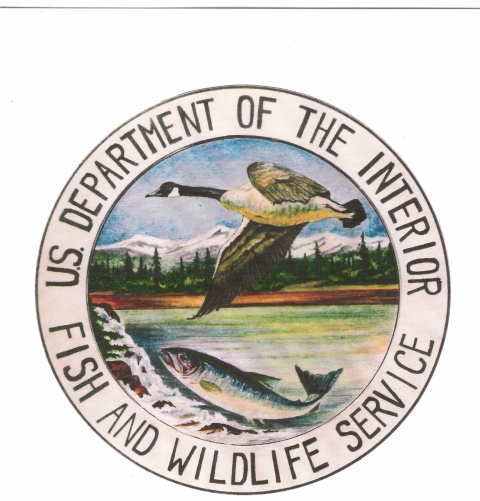About Us
Since 1871 the National Fish Hatchery system has been at work improving recreational fishing and restoring aquatic species that are in decline, at risk, and are important to the health of our aquatic systems. Across the country, the network of National Fish Hatcheries work with states and tribes to conserve, restore and enhance the fish and aquatic resources of America for future generation.
The Little White Salmon National Fish Hatchery was established in 1898 (although production began in 1896 on an experimental basis) to address the decline of Tule Fall Chinook, the native salmon stock that returned to the Little White Salmon River. It is the oldest hatchery on the Columbia River. We provide salmon to fulfill tribal trust responsibilities, mitigate for lost habitat due to hydro-electric projects on the Columbia River and also provide salmon for commercial and sport fisheries.
We are located in south-central Washington on the Little White Salmon River approximately one mile upstream from the Columbia River. The Little White Salmon River joins the Columbia River at river mile 162. Drano Lake, a natural impoundment at the mouth of the river, is a popular sport and tribal fishing area.
Our Mission
Since 1871, National Fish Hatcheries have been applying science-based approaches to conservation challenges. We work with our partners and engage the public to conserve, restore, and enhance fish and other aquatic resources for the continuing benefit of the American people. Conservation is at the heart of what we do, and we recognize that we do this work for the American people–both the present generation who benefit today and future generations who will inherit our legacy of conserving America’s aquatic resources.
Little White Salmon National Fish Hatchery was initially established to increase the salmon populations in the Columbia River. Over the years priorities have shifted to species restoration and recovery providing the opportunity to work with at-risk, threatened, and endangered species, but we remain true to our legacy of serving the public by continuing to stock state and federal recreational waters."
Our History
The Little White Salmon National Fish Hatchery was a pioneer in the fledgling science of salmon propagation when it began rearing salmon in 1896. During the past 125 years, the facility and propagation methods have changed dramatically and research is on-going. Today, more than 16.5 million young salmon are released into the river or transferred to other sites for release each year. The Little White Salmon River provides a cold, clean source of river water in which salmon are incubated and raised for 6 to 18 months.
Located on the Little White Salmon River, this site was selected since it was considered one of the principal spawning areas of the Quinnat or Chinook salmon. Assistant U.S. Fish Commissioner William Ravenel, describing the significance of the hatchery site, noted in 1898 that "During the season, the salmon appeared in such large numbers below the rock that the Indians often speared two and three at one cast of the spear". The original hatchery was described as a rough wooden structure without a floor and lit by skylights. It was equipped with 50 troughs that were fed by water from a nearby stream. Other buildings included a mess-house and sleeping quarters for employees. Fall Chinook eggs were taken from adult fish that were captured in a downstream trap from mid-September through mid-October. It was noted in 1898 that the best "fishing" occurred at night about one hour after dark. Spawning began in the morning and continued until eggs had been removed from all ripe fish. Hatchery records indicate that an average 16.5 million eggs were taken annually between 1896-1915. The eggs were incubated in baskets, hatched and eventually released as fry. Once the fry were released the station was closed for the season. The cost of constructing and operating the hatchery during the first year was $2,288.27.
Profound changes have occurred in hatchery operations over the years. While the hatchery continued to produce the native Tule Fall Chinook salmon, production was expanded to include chum, Coho, sockeye and spring Chinook salmon. Today, the hatchery produces spring and fall Chinook salmon. Production is roughly 1 million spring Chinook and 4.5 million upriver bright fall Chinook salmon annually. In addition the hatchery collects eggs for other state and tribal programs, bringing their total egg take up to 16.5 million annually.
Other Facilities in this Complex
We're part of the Columbia River Gorge National Fish Hatchery Complex, which includes the Carson, Eagle Creek, Little White Salmon, Spring Creek, Warm Springs, and Willard National Fish Hatcheries. Our Complex propagates, releases, and transfers to partners over 25 million salmon to meet the U.S. Fish and Wildlife Service's fisheries mitigation, restoration, and tribal trust responsibilities. Explore what each facility has to offer!






